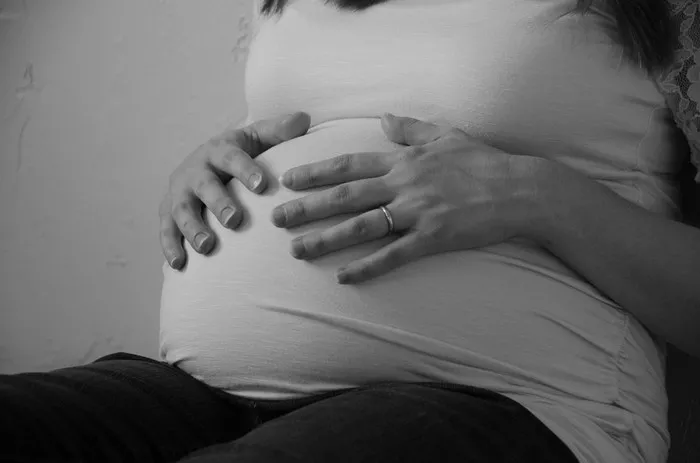The question of how many eggs are left at the age of 35 is of great significance in the realm of female reproductive health. As women reach this stage of life, they may be more attuned to their fertility and the potential for starting or expanding a family. Understanding the quantity and quality of eggs remaining is crucial as it can impact the ease and likelihood of conception. At 35, a woman is in a transitional phase where her ovarian reserve, which refers to the number and quality of eggs in the ovaries, has already started to change compared to her younger years. This article will explore in detail the various aspects related to the number of eggs left at 35 and what it means for a woman’s reproductive future.
Ovarian Reserve and Its Measurement
The concept of ovarian reserve is central to determining how many eggs are left.
Antral Follicle Count (AFC): This is a common method used to estimate ovarian reserve. It involves using ultrasound to count the number of small follicles in the ovaries. These antral follicles are precursors to the eggs that will potentially be ovulated. At 35, a normal AFC might range from around 5 to 15 follicles. However, this can vary widely among individuals. For example, a woman with a higher AFC may have a relatively better ovarian reserve compared to one with a lower count. If a woman has an AFC of less than 5, it could indicate a diminished ovarian reserve and potentially fewer eggs available for fertilization each month.
Follicle-Stimulating Hormone (FSH) Levels: FSH is a hormone that stimulates the growth and development of ovarian follicles. As ovarian reserve declines, the pituitary gland releases more FSH to try to encourage the ovaries to produce eggs. At 35, a woman’s FSH levels start to gradually increase. In a normal menstrual cycle, FSH levels are typically lower in the early follicular phase. However, if FSH levels are consistently elevated, say above 10 mIU/mL, it can suggest a reduction in the number of healthy eggs remaining. Higher FSH levels can also affect the quality of the eggs that are ovulated, as the ovaries may be working harder to produce them.
Natural Decline with Age
The number of eggs in a woman’s ovaries naturally decreases over time.
Rate of Decline: From puberty, a woman has a large number of eggs, estimated to be around 1 to 2 million. By the age of 35, this number has significantly decreased. The rate of decline accelerates as a woman gets older. Between the ages of 35 and 39, the decline is more pronounced compared to the years between 25 and 30. For instance, a woman at 30 might have around 100,000 to 150,000 eggs left, while at 35, this number could be closer to 50,000 to 80,000. This continuous reduction means that the chances of a successful pregnancy also gradually decrease as the pool of available eggs diminishes.
Impact on Fertility: With fewer eggs available, the probability of a healthy egg being released during each menstrual cycle is lower. Additionally, the quality of the remaining eggs also deteriorates. Eggs that are ovulated at 35 are more likely to have chromosomal abnormalities compared to those in a younger woman. This can lead to issues such as miscarriage or the birth of a child with a genetic disorder. For example, the risk of having a baby with Down syndrome increases from around 1 in 1,250 at age 25 to about 1 in 350 at age 35.
Lifestyle Factors Affecting Egg Quantity
Lifestyle choices can have a significant impact on the number of eggs remaining at 35.
Stress: Chronic stress can disrupt the hormonal balance in a woman’s body. When a woman is stressed, the hypothalamus-pituitary-adrenal (HPA) axis is activated, which can affect the hypothalamus-pituitary-ovarian (HPO) axis. This interference can lead to irregular menstrual cycles and potentially affect the release of eggs. For example, high levels of stress can cause an increase in cortisol, which may suppress the release of gonadotropin-releasing hormone (GnRH), thereby affecting FSH and luteinizing hormone (LH) production and ultimately the development and release of eggs.
Diet and Nutrition: A diet lacking in essential nutrients can have a negative impact on ovarian function and egg quantity. Adequate intake of antioxidants, such as vitamins C and E, is important for protecting the eggs from oxidative stress. Omega-3 fatty acids are also beneficial for reproductive health. For instance, a diet rich in processed foods and low in fresh fruits, vegetables, and healthy fats may contribute to a faster decline in egg quantity. Additionally, maintaining a healthy body weight is crucial. Being overweight or underweight can disrupt hormonal balance and affect ovulation. Women at 35 should strive for a body mass index (BMI) within the healthy range of 18.5 – 24.9.
Exercise: While regular exercise is beneficial for overall health, excessive or intense exercise can have a negative impact on egg quantity. Intense workouts can lead to a decrease in body fat percentage, which is necessary for the production of reproductive hormones. Female athletes who engage in very high-intensity training and have extremely low body fat levels may experience amenorrhea (absence of menstruation) or irregular periods, which indicates a disruption in the normal reproductive function and potentially a negative effect on the number of eggs being released or the overall ovarian reserve. However, a sedentary lifestyle is also not ideal. Moderate exercise, like brisk walking, swimming, or cycling for 30 minutes a few times a week, can help maintain a healthy weight and improve blood circulation, which is beneficial for the ovaries.
Medical Conditions and Egg Reserve
Certain medical conditions can affect the number of eggs left at 35.
Endometriosis: This is a condition where the tissue that normally lines the inside of the uterus grows outside of it. Endometriosis can cause inflammation and scarring in the pelvic area, which can affect the ovaries. The inflammation can disrupt the normal function of the ovaries and potentially lead to a decrease in the number of eggs available. For example, the adhesions formed due to endometriosis can damage the ovarian tissue and follicles, reducing the ovarian reserve.
Polycystic Ovary Syndrome (PCOS): PCOS is a hormonal disorder that affects the ovaries. Women with PCOS may have enlarged ovaries with multiple cysts. Although they may have a higher number of follicles compared to women without PCOS, the quality of the eggs may be compromised. The hormonal imbalance in PCOS, such as increased levels of androgens and insulin resistance, can disrupt the normal development and release of eggs, which in turn can affect the ovarian reserve and the overall number of viable eggs available for fertilization.
Autoimmune Disorders: Some autoimmune disorders, like lupus or rheumatoid arthritis, can affect the ovaries. The body’s immune system may mistakenly attack the ovarian tissue, leading to a decrease in the number of eggs. For example, in autoimmune oophoritis, the immune system targets the ovaries, causing inflammation and damage to the follicles and eggs, thereby reducing the ovarian reserve and the chances of successful conception.
Fertility Treatments and Egg Quantity Considerations
When it comes to fertility treatments at 35, the number of eggs left plays a crucial role.
Ovulation Induction: This treatment aims to stimulate the ovaries to produce more eggs. However, if a woman has a very low ovarian reserve at 35, the response to ovulation induction drugs may be limited. For example, if a woman has only a few remaining follicles, the drugs may not be able to effectively stimulate the growth and release of a sufficient number of eggs. The success of ovulation induction also depends on the quality of the eggs that are produced. Even if some eggs are stimulated, they may have a higher risk of chromosomal abnormalities due to the age-related decline in egg quality.
In Vitro Fertilization (IVF): In IVF, multiple eggs are retrieved from the ovaries. At 35, the number of eggs retrieved can vary widely depending on the individual’s ovarian reserve. A woman with a better ovarian reserve may have a higher number of eggs retrieved, increasing the chances of successful fertilization and embryo development. However, if the ovarian reserve is low, the number of eggs available for retrieval may be insufficient. In such cases, the IVF cycle may have a lower success rate or may require more aggressive stimulation protocols, which carry their own risks, such as ovarian hyperstimulation syndrome (OHSS).
Egg Freezing: For women at 35 who are concerned about their future fertility, egg freezing can be an option. The number of eggs that can be successfully frozen depends on the ovarian reserve at the time of the procedure. If a woman has a relatively good ovarian reserve, a larger number of eggs can be frozen, providing more opportunities for future use. However, if the ovarian reserve is already diminished, the number of viable eggs that can be frozen may be limited, and the chances of a successful pregnancy from the frozen eggs may also be lower.
The Importance of Regular Monitoring
Regular monitoring of ovarian reserve is essential for women at 35.
Tracking Hormonal Changes: By regularly measuring FSH, LH, estradiol, and other hormones, doctors can get a better understanding of how the ovaries are functioning and the rate of decline in ovarian reserve. For example, if FSH levels are steadily increasing over consecutive menstrual cycles, it indicates a progressive reduction in the number of healthy eggs. Monitoring hormonal changes can also help in predicting potential fertility issues and planning appropriate interventions.
Ultrasound Examinations: Regular ultrasound scans to check the antral follicle count and the appearance of the ovaries can provide valuable information about the ovarian reserve. Changes in the size and number of follicles over time can give an indication of the remaining egg quantity. Additionally, ultrasound can detect any structural abnormalities in the ovaries that may be affecting egg production or quality. For instance, if a cyst is detected or if the ovaries appear smaller than normal, it could suggest a problem with the ovarian reserve.
Genetic Testing: In some cases, genetic testing may be recommended. Women at 35 may have an increased risk of having eggs with chromosomal abnormalities. Genetic testing can help identify any potential genetic issues that could affect the viability of the eggs or the health of a future pregnancy. For example, preimplantation genetic testing (PGT) can be done during IVF to screen embryos for chromosomal abnormalities before they are transferred to the uterus, increasing the chances of a successful and healthy pregnancy.
Conclusion
At the age of 35, the number of eggs left in a woman’s ovaries is a complex and important aspect of her reproductive health. It is influenced by natural age-related decline, lifestyle factors, medical conditions, and can have a significant impact on fertility and the success of various fertility treatments. Understanding the factors that affect egg quantity and taking proactive steps such as maintaining a healthy lifestyle, getting regular medical check-ups, and considering appropriate fertility options when necessary can help women at 35 make informed decisions about their reproductive future. With proper care and awareness, women can optimize their chances of achieving a healthy pregnancy, whether it be through natural conception or with the assistance of fertility treatments.
Related topics

























